AI Search Optimization for Google AI Answers: 6 Differences From Classic SEO
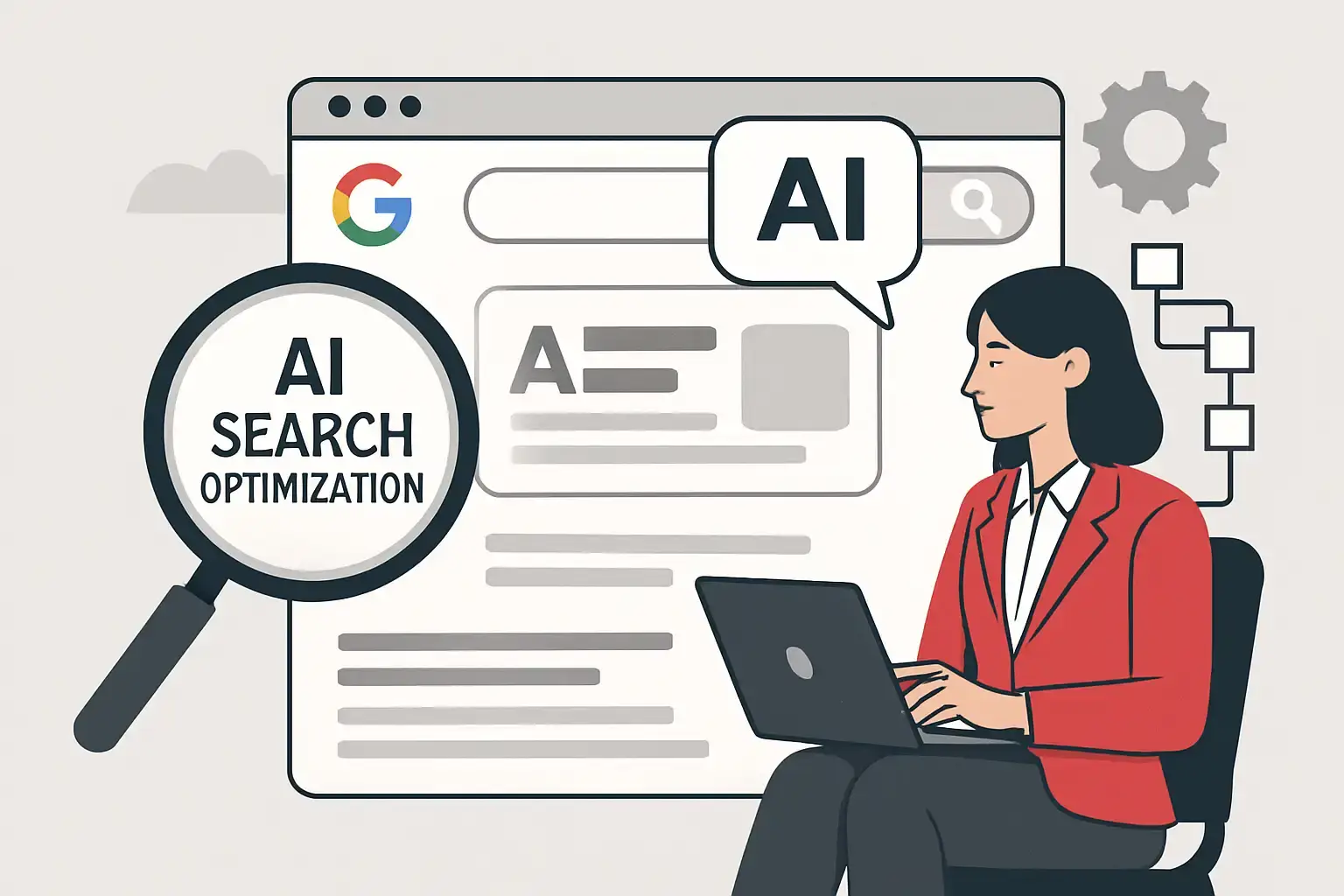
TL;DR — AI search optimization reframes how we win traffic: move from chasing broad keywords to mapping conversations and emitting clear, defensible answers anchored in structured data and entity signals. It’s about ai overviews optimization and ensuring AI answer engine optimization, not just traditional page rankings. Focus on passage-level optimization, answer-first content, and atomic paragraphs that AI can pull easily, with question headings and a persistent author profile.
Build a robust data distribution and entity hygiene program—sameAs links, Wikidata entries, and canonical schema—so you earn citations in AI answers across Bing Copilot, Perplexity, and other AI overviews. Measure success with AI-specific metrics like citation share, answer impressions, zero-click impact, and assisted conversions, rather than only rankings or CTR. Finally, align content with PR, knowledge bases, and brand authority in AI results, so you protect visibility in zero-click environments and keep content fresh with living pages.
Table of Contents
1) Queries and Intent: From Keywords to Conversations
The way people search is shifting fast. Instead of typing isolated keywords like “best running shoes,” users now engage in conversational, multi-step prompts. This means your keyword research and topic selection need a fresh approach—one that maps entire conversation flows, not just single queries. For a deeper walkthrough of adapting keyword research and mapping conversation flows, see the ultimate AI search guide.
How conversational prompts change keyword research
Think of search as a dialogue, not a one-off question. For example, a user might start with “best running shoes,” then follow up with “under $100,” “for flat feet,” and finally “where to buy near me.” Your content should anticipate these steps.
Here’s what to do:
- Map micro-intents and conversation trees: Identify the initial question, likely clarifications, and follow-ups. Build content that answers the first question clearly and prepares for the next 2–3.
- Use new data sources: Look beyond traditional keyword tools. Analyze chat logs, customer support transcripts, internal search queries, and “People Also Ask” boxes. These reveal real user follow-ups.
- Tag queries by task and constraints: Classify queries by what the user wants to do (research, compare, buy, troubleshoot) and by specifics like price or location.
- Create “atomic” answer units: Write short, standalone paragraphs (40–120 words) that address one micro-intent. These bite-sized answers are what AI retrieval models pull to generate responses.
Tip: Start by picking your top 50 queries where you’re losing traffic. Build conversation trees for each and identify 1–3 atomic answers you can quickly publish or mark up.
Should you still chase search volume?
Not exactly. Raw search volume still helps size opportunities, but it’s no longer the main priority. Instead, focus on intent clarity and answer extractability.
Use this simple framework to prioritize:
|
Factor |
What it means |
Why it matters |
|---|---|---|
|
Impact |
Frequency of the task + business value |
High-impact tasks drive conversions |
|
Feasibility |
Ease of creating concise, authoritative answers |
Models prefer short, factual content |
|
Defensibility |
How well you can own the answer (unique data, brand authority) |
Protects your content from competitors |
For example, a low-volume query with a clear, factual answer might be more valuable than a high-volume but vague one. Score your initiatives by these three factors and focus on tasks where you can own a single authoritative passage.
By shifting from chasing keywords to mapping conversations and prioritizing clear, defensible answers, you’ll better align your SEO strategy with how AI-powered search works today.
2) Visibility Mechanics: Ranking Pages vs Earning Citations
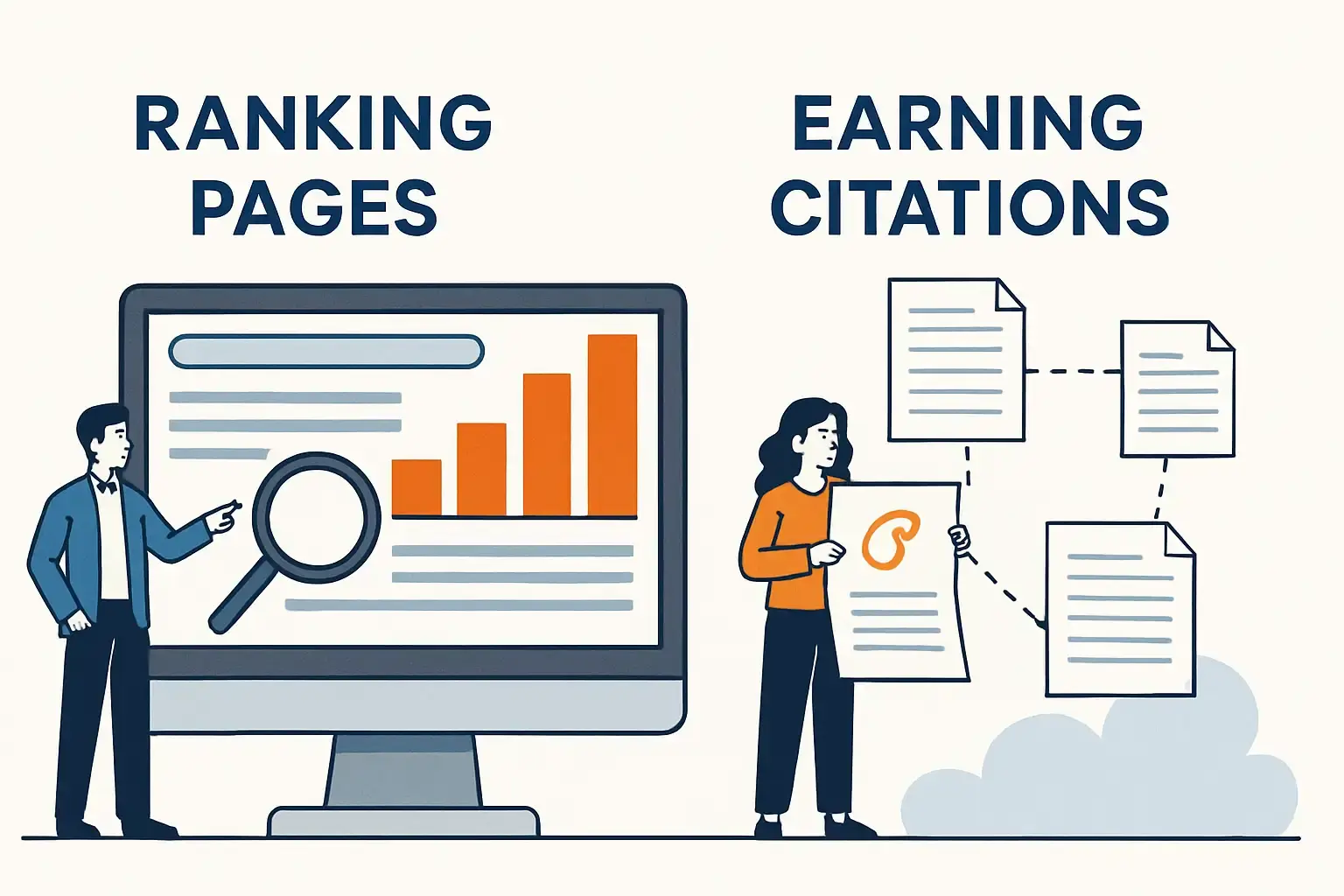
When you think about classic SEO, ranking a page in search results usually means ticking boxes like backlinks, keyword relevance, and user engagement. But with AI-powered answers—like those in Bing Copilot or Perplexity—the game changes. Instead of ranking whole pages, AI models pick specific passages or facts to cite. Here’s what you need to know:
What Drives Classic SERP Rankings?
Traditional search engines still rely on familiar signals:
- Backlinks and domain authority: The more quality sites link to you, the better.
- Page-level relevance: Your content needs to match the query keywords and cover the topic deeply.
- User engagement: Click-through rates (CTR) and how long users stay on your page matter.
- Structured data: Helpful but mostly supplementary for classic SEO.
What Makes AI Models Cite Your Content?
AI answers focus on precision and trustworthiness at a smaller scale:
- Passage-level relevance: Short, self-contained sentences that directly answer a question.
- Entity alignment: Clear mentions of people, organizations, or places with canonical identifiers.
- Extractability: Answers placed at the top or in clearly labeled FAQ blocks.
- Trust signals: Consistent citations across the web, authoritative hosts, and knowledge graph presence.
- Structured data and metadata: Schema markup that identifies authorship, dates, and main entities.
To boost your chances of being cited by AI, put a concise answer right at the top of your page, mark it up with schema, use clear question headings (like H2s), and include unique data or facts. Also, make sure your content is crawlable and canonical.
Do Entities and Structured Data Beat Exact-Match Keywords?
Yes. AI retrieval models don’t just look for exact keyword matches—they understand meaning and relationships between entities. That means:
-
Entity optimization: Use canonical names, aliases, and IDs (like Wikidata QIDs). Add
`sameAs`in your schema and create dedicated pages for brands, products, or authors. - Passage optimization: Write short, focused passages that answer one question clearly. These are what AI indexes and scores.
- Structured data: Use FAQ, QAPage, Article, Product, or Dataset schema to help AI identify and attribute your content.
Exact-match keywords still help with classic SEO and getting your pages into the AI’s retrieval pool, but they’re no longer the main factor for earning citations.
By shifting your focus from broad page relevance to precise, entity-rich passages marked up with structured data, you’ll better protect your visibility in zero-click AI environments. It’s about working smarter, not harder, with your content strategy.
3) Content Format: Long Articles vs Answer‑First, Retrieval‑Friendly Content
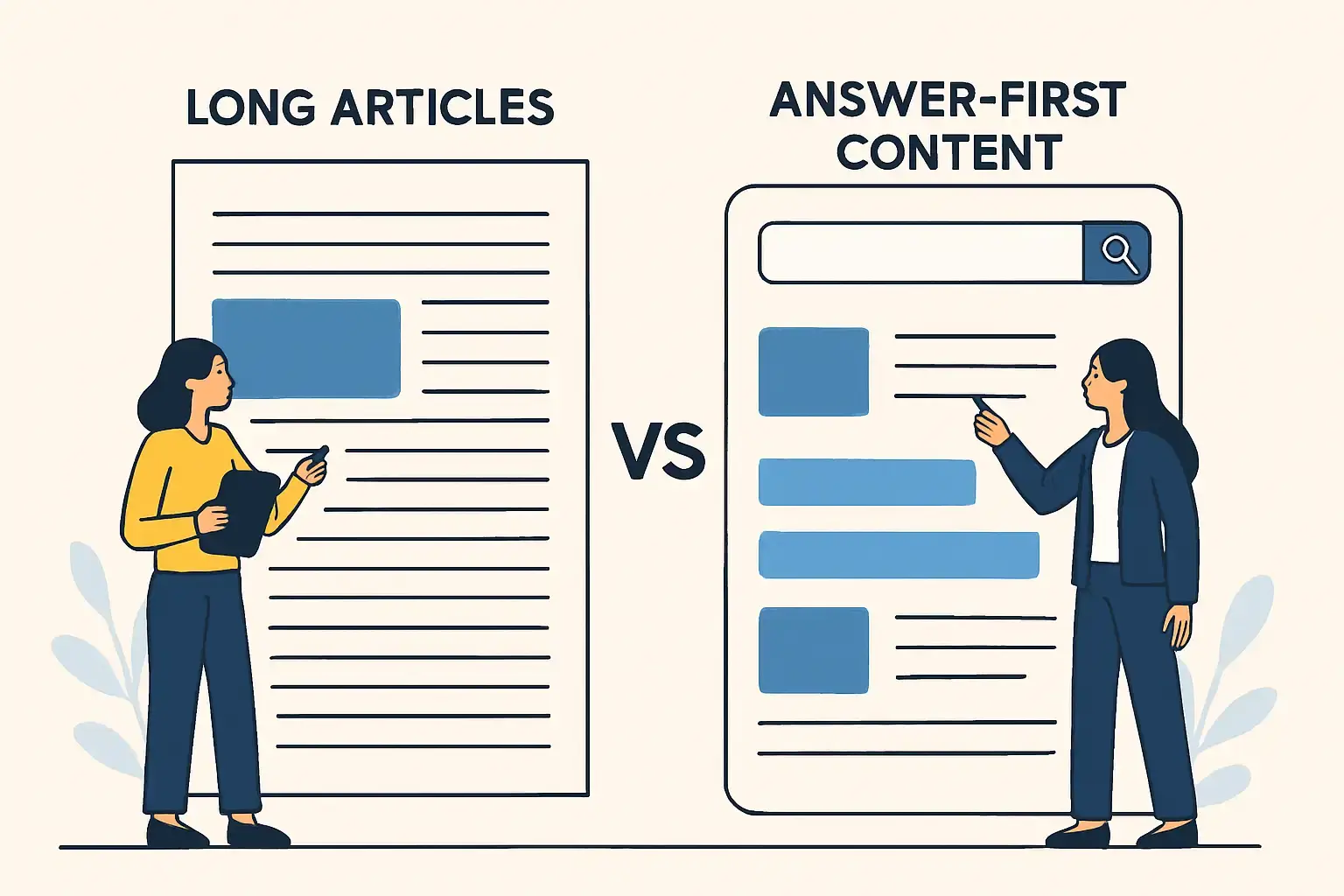
When AI models scan your pages, they’re hunting for clean, extractable answers—not sprawling essays. That means your content format needs a rethink. Instead of long, winding articles, focus on answer-first structures that make it easy for AI to pull out precise facts.
How to Structure Pages for AI Extraction
Design your pages like a well-organized Q&A hub. Here’s how to do it:
- Answer‑first lead: Put a 1–2 sentence direct answer right under the question or main heading. No fluff.
- Use question H2s: Phrase section headings as exact questions, e.g., “How long does X take?” This signals clear answer containers.
- Atomic paragraphs: Keep each paragraph focused and self-contained (40–120 words), with the key fact front and center.
- Bullet lists and tables: Use these for steps, comparisons, or specs—they’re gold for AI extraction.
- Schema markup: Implement JSON‑LD for FAQPage, QAPage, Article, Product, Dataset, Person, Organization. Include author info, publish dates, and links to authoritative sources.
- Byline and author profile: Link to a persistent author page with credentials and social or ORCID/Wikidata profiles.
- Citations: Inline links to primary sources plus a “Sources” section with structured metadata (source name, URL, publish date).
Pro tip: Create an ‘answer atom’ template your team uses consistently:`Q H2 → 1-line answer → 2–3 supporting bullets or stats → link to source → schema block.`
When to Go Deep vs. Keep It Concise
Not every question needs a novel. Use a hybrid model:
|
When to Be Concise |
When to Go Deep |
|---|---|
|
Single factual answers (definitions, specs) |
Complex topics needing nuance (health, finance) |
|
Queries likely used in multi-turn chats |
Topics where conversions benefit from depth |
Keep your top answer short and sharp for quick AI retrieval. Below that, add deeper context, comparisons, and trust signals.
Handling Freshness in AI-Surfaced Facts
AI loves fresh, accurate info. Here’s how to keep your content up to date:
-
Show
`datePublished`and`dateModified`in schema and visibly on the page. - Use rapid update workflows for time-sensitive pages (IndexNow, sitemap pings, API feeds).
- Embed live widgets or API pulls for real-time stats, clearly timestamped.
- Maintain “living” pages with changelogs; audit high-impact pages weekly or monthly depending on volatility.
Remember: Always keep the top answer accurate and timestamped. Use deeper content to explain nuance and link to primary sources for verification.
By structuring your content this way, you make it easy for AI to find and trust your answers—helping you earn citations and protect your traffic in zero-click environments.
4) Authority Signals: Backlinks vs E‑E‑A‑T and Source Trust
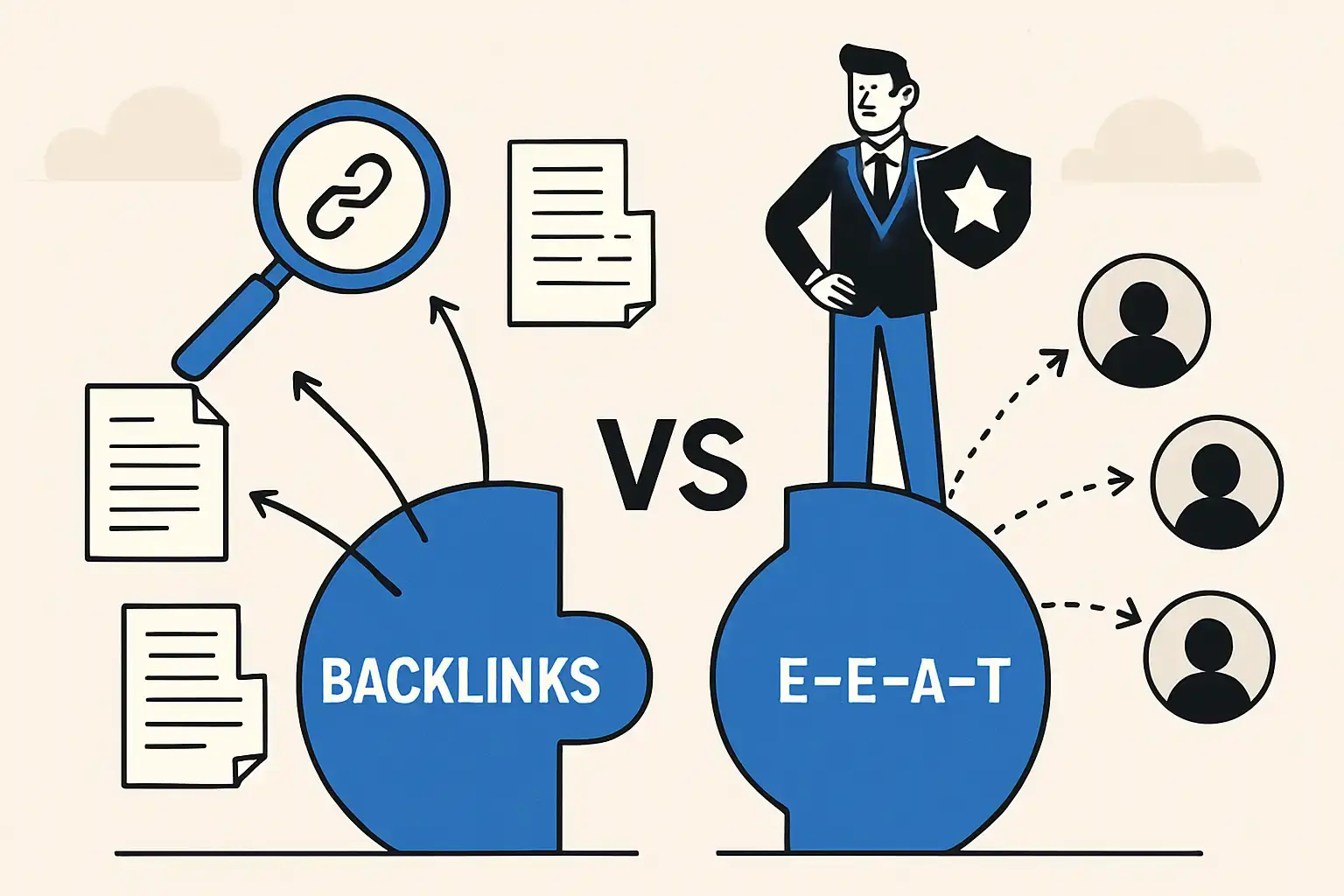
You might be wondering: do backlinks still matter in the AI search era? The short answer is yes—but their role is evolving. Instead of being the sole ranking powerhouse, backlinks now act as one piece of a bigger trust puzzle that AI systems use to decide which sources to trust and surface.
Why Backlinks Aren't Enough Anymore
Backlinks still help establish your domain’s authority and increase the chance your content gets included in AI retrieval corpora. But AI models go beyond link graphs. They look at:
- Cross-web citation density: How often and where your brand or content is cited across authoritative sites.
- Authoritativeness of entities: AI pays close attention to brand and author signals, like consistent bylines and verified profiles.
- Structured data and knowledge bases: Schema markup, organization logos, and entries in Wikidata or government databases help AI confirm your identity and trustworthiness.
What Trust Signals Actually Move the Needle?
Focus on signals that feed into knowledge graphs and are verifiable across high-quality sources. Here’s what really counts:
|
Trust Signal Type |
Why It Matters |
Practical Tip |
|---|---|---|
|
Cross-web citations from authoritative domains (news, government, academic) |
Frequency and quality boost your entity’s credibility |
Get featured or cited by reputable outlets |
|
Presence in knowledge repositories (Wikidata, DBpedia, Wikipedia) |
Crucial for AI to resolve your brand or author as a real entity |
Submit and maintain accurate entries |
|
Structured org and author schema (sameAs, logo, social profiles) |
Helps AI link your site and authors to trusted identities |
Use schema markup consistently |
|
Primary sources and datasets with clear provenance |
AI favors original, verifiable data sources |
Publish whitepapers, reports, or datasets |
|
Reviews and ratings (commerce/local) |
Adds credibility for product or local business answers |
Encourage genuine reviews on trusted platforms |
|
Clear bylines + expert credentials (especially for health/finance) |
Supports E-E-A-T enforcement by AI models |
Maintain detailed author bios with credentials |
Pro tip: Instead of chasing a high volume of low-quality backlinks, invest your time in building authoritative citations, structured data, and knowledge base entries. These primary signals have a bigger impact on AI-driven search visibility.
How to Build Your Entity Trust Program
Think of link building as just one part of a broader entity-building strategy that includes:
- Maintaining clean, consistent author profiles with credentials.
- Publishing authoritative assets like whitepapers or datasets.
- Getting cited by high-quality outlets and knowledge bases.
- Ensuring your organization’s identity (name, logo, sameAs links) is consistent across the web.
By shifting your focus from pure link quantity to a holistic trust and authority approach, you’ll better protect your discovery in zero-click AI answer environments.
This approach helps you stay visible and credible as AI systems increasingly rely on E-E-A-T (Experience, Expertise, Authoritativeness, Trustworthiness) and structured entity signals over traditional backlink counts.
5) Measurement: Rankings and CTR vs Citation Share and Zero‑Click Impact
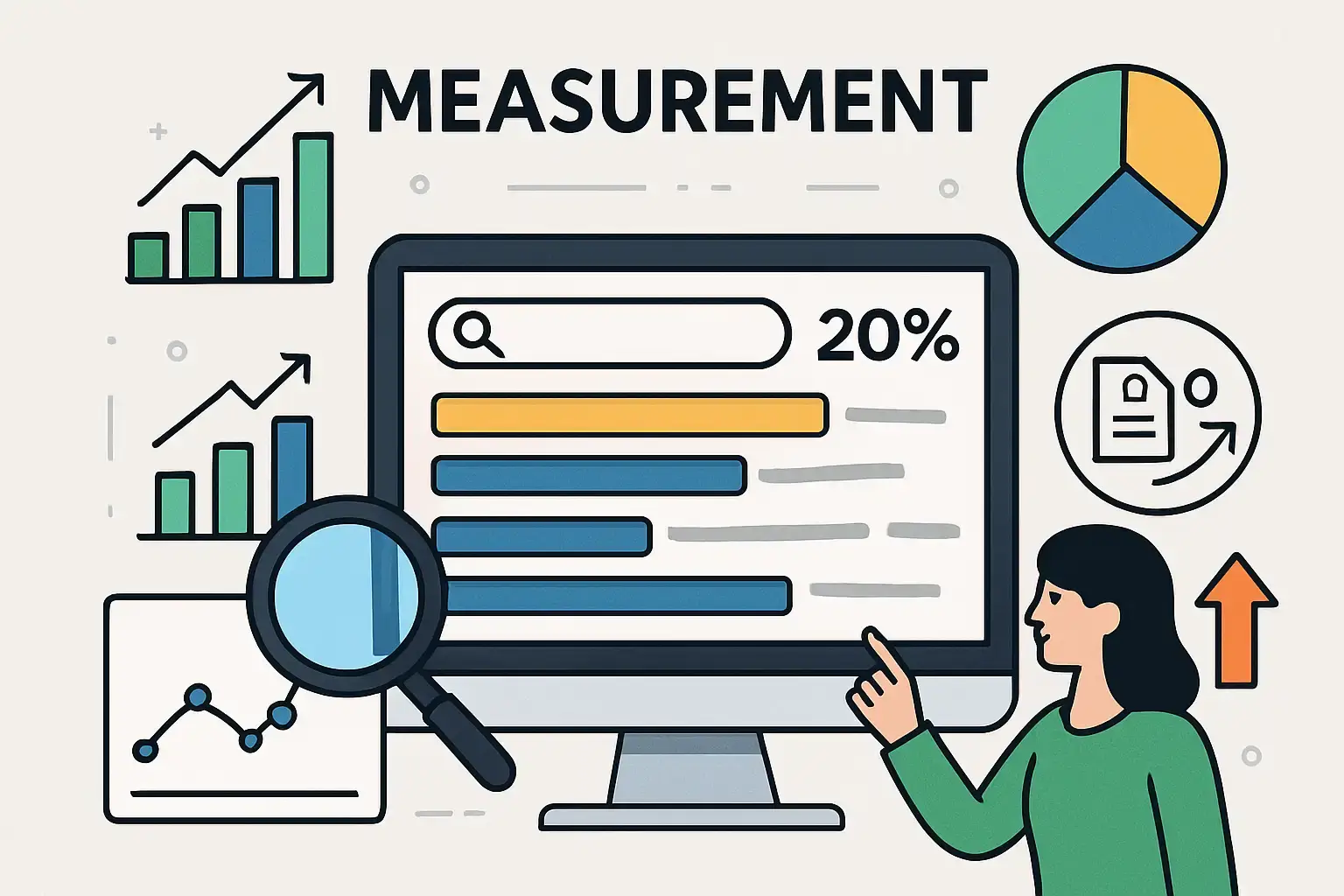
When AI Overviews, Bing Copilot, and Perplexity start eating into your organic traffic, the old SEO playbook—tracking rankings and click-through rates (CTR)—doesn't cut it anymore. Instead, you need fresh metrics that capture how often your content is cited in AI answers and how that affects your visibility and conversions.
Tracking AI Citations Over Time
Start small and build a repeatable system to monitor your presence in AI answers:
- Pick your seed queries: Focus on 100–500 top queries where you’ve noticed traffic drops or see strategic value.
- Snapshot AI answers weekly: Crawl Bing AI Overviews, Copilot outputs (via API if possible), and Perplexity answers. Capture the snippet, cited URL(s), and timestamp.
-
Store data simply: Use a table with columns like
`query`,`snippet`,`cited_url`,`source`, and`date`. - Leverage APIs: Bing Web Search and Bing SERP APIs can return answer blocks. Check if Perplexity or others offer export options.
- Correlate with analytics: Match citation dates with organic clicks and impressions from Google Search Console (GSC) or GA4. Use server logs and UTM tags for deeper insights.
- Automate diffs and alerts: Detect when your domain is added or removed from citations and notify content owners.
- Visualize results: Build a dashboard showing citation share by query, change rates, top sources, and traffic impact. Start simple with Google Sheets and scheduled scrapes.
If you lack tooling, do a manual weekly check on your top 50 queries. Note who’s cited and how the excerpt is composed.
Tip: Even a basic weekly snapshot can reveal if your content is gaining or losing ground in AI citations, helping you prioritize updates.
New KPIs to Measure Success
Forget just rankings and CTR. Here are the key metrics that matter in AI-driven search:
|
KPI |
What It Measures |
How to Use It |
|---|---|---|
|
Citation Share |
% of monitored queries where your content is cited |
Track growth to see if you’re winning AI mentions |
|
Answer Impressions |
Estimated times your content appears in AI answers |
Gauge visibility beyond clicks |
|
Zero-Click Impact |
Traffic change when citations appear or disappear |
Understand how AI answers affect your clicks |
|
Assisted Conversions |
Conversions influenced by AI answer appearances |
Tie AI visibility to business outcomes |
|
Brand Mentions & SOV |
Unlinked brand visibility in AI outputs |
Measure brand presence even without clicks |
|
Excerpt CTR |
Clicks from AI answer pages to your site (if trackable) |
Optimize snippets to drive traffic |
|
Downstream Engagement |
User behavior after AI answer clicks |
Assess quality of AI-driven visitors |
Formulas to keep handy:
- Citation Share = (Number of queries where you’re cited) ÷ (Total monitored queries)
- Assisted Conversion Rate = (Conversions with AI citation touchpoint) ÷ (Total conversions)
Set clear targets like:
“Increase citation share from 10% to 25% on top 100 queries within 90 days.” Track progress weekly to stay on course.
By shifting your focus to these AI-specific metrics, you’ll get a clearer picture of how your content performs in zero-click environments and where to double down efforts. This approach helps you protect your discovery and prove value to stakeholders, even when traditional SEO signals fade.
6) Tactics and Workflow: Link Building vs Data Distribution and Entity Hygiene
When you’re used to traditional SEO, your daily grind probably revolves around link building and chasing rankings. But with AI search optimization, the game changes. Instead of just backlinks, you’re focusing on data distribution, schema management, and keeping your entities squeaky clean. Here’s how to shift your tactics and workflow to stay ahead.
Day-to-Day Changes: From One-Off Fixes to Continuous Ops

Forget the old “fix it and forget it” SEO mindset. AI-driven search demands ongoing care and feeding of your content and structured data.
Your daily checklist should include:
- Schema Ops: Treat your schema markup like code. Maintain a living JSON-LD library, automate its insertion into templates, and audit for errors weekly. Version control and linting aren’t just for developers anymore.
- IndexNow & Pinging: Implement IndexNow to notify search engines instantly when pages update. Trigger pings on content changes, especially for “living” pages that evolve frequently.
- Feed/API Distribution: Share your canonical facts through APIs or structured feeds (think product feeds, fact sheets, datasets). This helps partners and AI knowledge systems ingest your data directly.
- Content Cadence: Assign owners for your top pages with SLAs for fact checks—weekly for volatile topics, quarterly for evergreen content. Sync your editorial calendar with product launches and PR pipelines.
- Lightweight Automation: Use scripts to generate FAQ JSON-LD from CMS fields, create atomic answer blocks, and produce change logs automatically.
- Monitoring & Alerts: Set up alerts for when high-impact pages drop out of AI citations or when your answer excerpts change unexpectedly.
- Cross-Functional Syncs: Hold weekly standups with SEO, communications/PR, product, and legal teams to manage time-sensitive facts and embargoes.
Small wins to start: Convert your top 100 answerable paragraphs into structured FAQ blocks and implement IndexNow pings for those pages within the first 30 days.
“Implementing IndexNow can reduce the time it takes for search engines to discover your content changes from days to minutes, giving you a real edge in fast-moving topics.”
Prioritizing Topics, Fixing Entity Gaps, and Aligning PR
You can’t optimize everything at once. Use a scored roadmap to prioritize topics and fix entity gaps, then align your PR efforts to boost AI answer eligibility.
How to prioritize:
|
Factor |
What It Means |
Why It Matters |
|---|---|---|
|
Impact |
Business value of the topic |
Focus on what moves the needle |
|
Citationability |
Ease of extracting a clear answer |
AI loves clear, factual snippets |
|
Defensibility |
Unique data or brand authority |
Protects your content from copy |
|
Volatility |
How often the info changes |
Keeps answers fresh and relevant |
Start with the top 20–50 queries scoring high on impact and citationability.
Fixing entity gaps:
- Inventory your key entities (people, products, processes).
- Check their presence in Wikidata, Wikipedia, Google Knowledge Graph, and authoritative sites.
- Create or enhance canonical entity pages on your site with proper schema (Person, Organization, Product) and sameAs links to external profiles.
- Submit structured data to knowledge repositories and ensure consistent name, address, phone (NAP) and organizational metadata across the web.
Aligning PR with AI eligibility:
- Produce primary, linkable assets like data reports, localized facts, and expert quotes that journalists and AI systems will cite.
- Include structured data and links in press releases and media placements.
- Provide reporters with canonical quotes and fact sheets.
- Coordinate embargoes and publication timing with IndexNow and news sitemaps to ensure your canonical version is live when coverage appears.
Example 90-day plan:
- Weeks 1–2: Audit top 100 queries and entity coverage.
- Weeks 3–6: Convert top 50 answers into answer-first pages with schema and author pages.
- Weeks 7–12: Launch a PR blitz for 10 high-value reports/datasets, submit to knowledge bases, and follow up with outreach.
This combined approach of prioritized content, entity hygiene, and targeted PR is your fastest path to earning AI citations and protecting your discovery in zero-click search environments.
Switching from traditional link building to this new workflow might feel like a big leap, but with steady, focused steps, you’ll build a resilient presence that AI search engines can’t ignore. Keep at it—you’re setting the foundation for the future of search visibility!
Frequently Asked Questions (FAQ)
How does AI search optimization differ from traditional SEO?
Traditional SEO focuses on page-level rankings driven by backlinks, keyword relevance, and engagement. AI search optimization prioritizes conversation mapping, extraction-friendly content, and trustworthy signals, with emphasis on entity signals and citations that AI systems can rely on. It relies on schema for AI search, structured data for AI answers, and passage optimization to produce compact, answerable snippets. Measure success with AI-specific metrics such as citation share, zero-click impact, and assisted conversions rather than only rankings or CTR; maintain entity hygiene and consistent brand signals to support AI overviews across engines like Bing Copilot and Perplexity.
How should I structure content to help AI extraction?
Structure pages as an answer-first hub: start with a 1–2 sentence direct answer under each question, use exact question headings (H2), keep atomic paragraphs of 40–120 words, and use bullets or tables for steps or specs. Implement FAQPage, QAPage, Article, or Product schema (structured data for AI answers) and include clear sources. This approach is passage optimization for AI and fits content for AI summaries, making it easy for AI to pull precise facts.
What metrics should I track to measure AI-driven visibility?
Move beyond rankings and CTR. Track AI citations over time for your top queries, compute citation share, monitor answer impressions, and measure zero-click impact and assisted conversions. Track brand mentions and share of voice, and, if possible, monitor excerpt CTR. Use dashboards to visualize track AI overviews rankings and see how AI overviews pull your content, and connect AI visibility to traffic.
Do backlinks still matter in AI-driven search?
Backlinks still matter for authority, but AI-driven search leans on cross-web citations, entity trust, and knowledge graphs rather than link counts alone. Focus on signal-rich citations from reputable domains, consistent author and brand signals, and robust structured data. Maintain E‑E‑A‑T signals for AI answers and build brand authority in AI results through accurate bylines and knowledge base entries, not just low-quality links.
What daily/weekly workflows should teams adopt for AI optimization?
Adopt schema ops, IndexNow pinging, and API-driven data distribution; set up a content cadence with owners and SLAs; maintain a living JSON-LD schema library and automate FAQ/QA blocks; monitor high-impact pages with alerts; run weekly cross-functional standups with SEO, PR, product, and legal to align on canonical facts and embargoes; focus on topic clusters for AI search and fix entity gaps before PR pushes. Start with a 90-day plan: audit top queries, convert top answers to answer-first pages, launch high-value datasets or reports, and align PR for AI eligibility.
